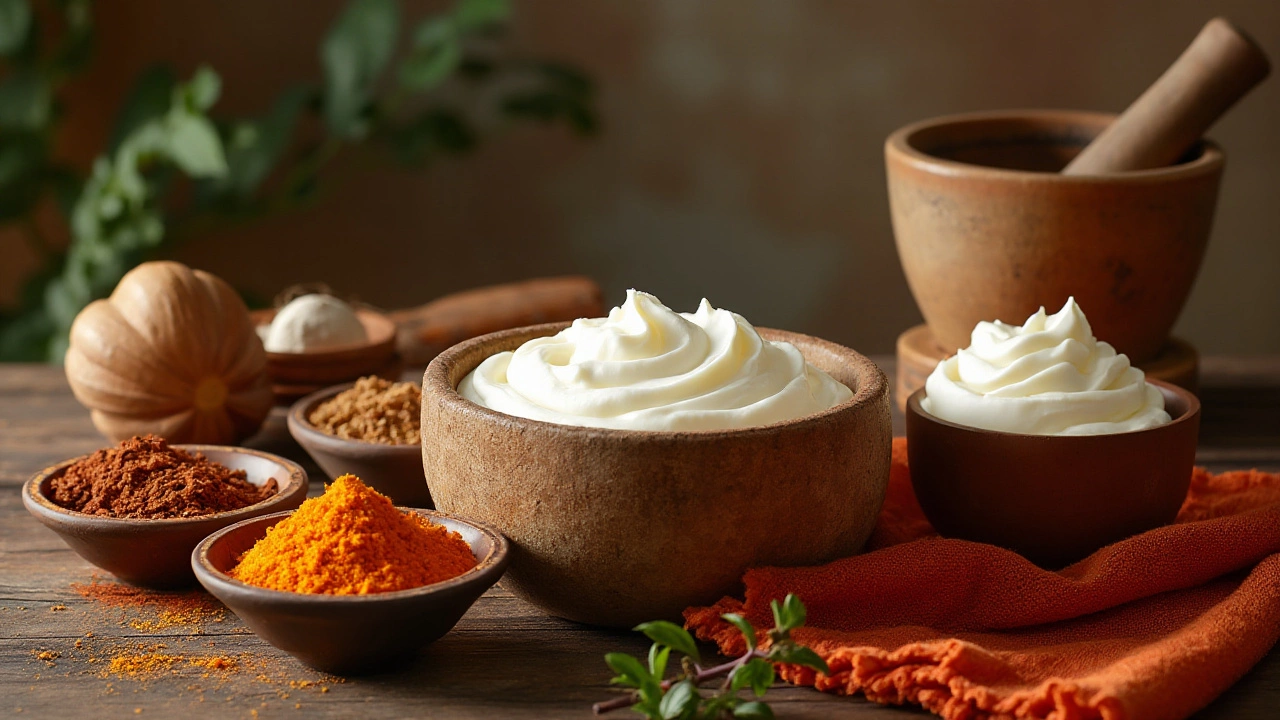Yogurt Replacement: Easy Swaps for Creamy Dishes
When cooking with yogurt replacement, a non‑dairy or alternative ingredient used to mimic the tang, creaminess, and binding power of regular yogurt in recipes. Also known as yogurt substitute, it lets you keep dishes light, avoid lactose, or stay fully vegan.
Many Indian cooks start with curd, traditional fermented milk that adds sour depth to dal, marinades, and chutneys. When curd isn’t an option, plant‑based milk, milk made from soy, almond, coconut or oat, often fortified with calcium becomes the base for a dairy‑free version. Vegan cooking, a style that excludes all animal products, relies heavily on these swaps to retain texture and flavor. Together they form a toolkit that covers everything from breakfast lassis to spicy marinades.
Why Choose a Yogurt Replacement?
The core idea is simple: a yogurt replacement must provide acidity, thickness, and a mild probiotic feel. Acidity triggers the same tenderizing effect in meat marinades that curd does in tandoori chicken, while thickness helps bind batter for dosas and pakoras. When you add a splash of lemon juice to coconut milk, you create the tang that lemon brings to biryani, as discussed in our "Why Add Lemon to Biryani?" guide. This same principle lets you swap curd in dosa batter without losing the airy lift that baking soda gives, a trick we covered in "Perfect Dosage: How Much Baking Soda To Use in Dosa Batter for Fluffy Results".
Plant‑based yogurts—made from soy, almond, or coconut—are pre‑fermented, so they already carry that probiotic note. If you need a quicker fix, simply whisk together equal parts plant milk and a tablespoon of lemon juice or apple cider vinegar, let it sit for five minutes, and you’ve got a tangy base ready for raita, marinades, or creamy sauces. This method mirrors the science behind why milk curdles with lemon, a topic we explain in "Why Lemon Juice Makes Milk Curdle".
Choosing the right replacement also depends on the dish’s heat level. For fiery curries, a coconut‑based yogurt keeps the sauce cool and adds a subtle sweetness, echoing the balance we explore in "Curry Ingredients: The Essential Flavors Every Dish Needs". For lighter salads or chutneys, a soy‑based yogurt provides a neutral canvas, similar to how we recommend specific oils for soft rotis in "Best Time to Add Oil in Roti Dough".
Beyond flavor, these swaps cater to health goals. Dairy alternatives often cut saturated fat, align with lactose‑intolerance concerns, and fit neatly into the nutrition facts of dal, which we broke down in "Dal Nutrition Facts: Is It More Protein or Carbs?". By integrating plant‑based yogurt, you keep protein levels high while reducing calories—perfect for those watching their intake without sacrificing Indian comfort food.
Below you’ll find a curated mix of articles that dive deeper into each ingredient, show real‑world applications, and give step‑by‑step tips for mastering yogurt‑free cooking. From classic curd tricks to cutting‑edge vegan sauces, the collection covers every angle you need to start swapping confidently.

Best Alternatives to Indian Yogurt for Tandoori Chicken
Indian yogurt, known as dahi, is a key ingredient in traditional tandoori chicken recipes. However, finding a suitable substitute can be essential for those who are lactose intolerant, vegan, or simply out of yogurt at home. This article explores various alternatives such as Greek yogurt, coconut milk yogurt, and more unusual options like cashew cream, offering tips on how they can be used effectively in the marination process. Understanding these alternatives can help recreate authentic flavors while accommodating dietary preferences.